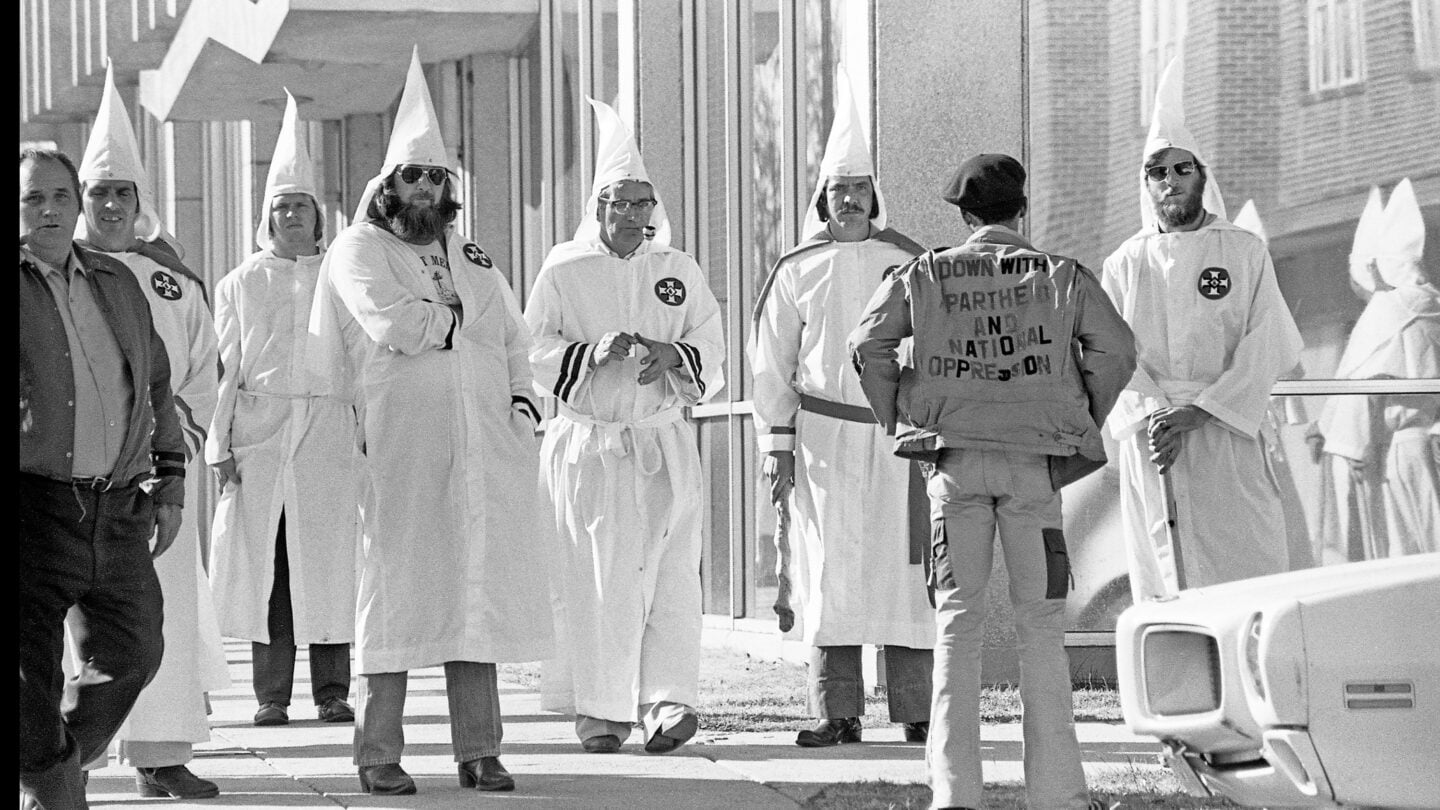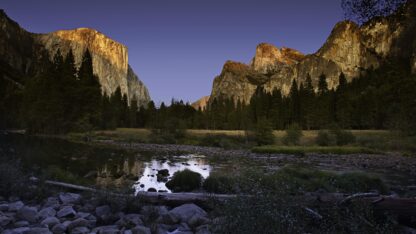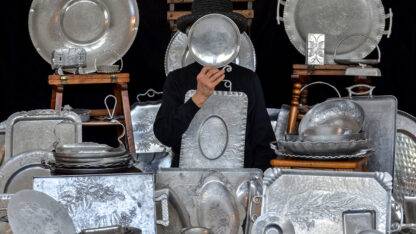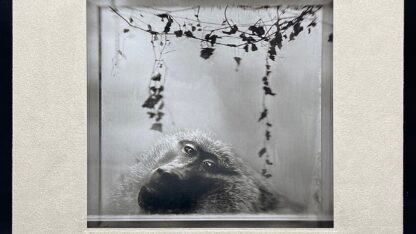For decades, Black protestors have chanted “No justice, no peace” in demonstrations against police brutality. This slogan is also the title of a new exhibition on view at Hammonds House Museum, “No Justice, No Peace: Protest Photography from 1967 through 2022.” Among the featured artists is photographer Jim Alexander, who has been capturing the raw emotion of protestors since the 1960s. He joined “City Lights” host Lois Reitzes via Zoom with film director and producer Adam Davis McGee, whose virtual film series “In Protest: Grassroots Stories from the Front Lines” is showing concurrently at Hammonds House.
The evolution of a photojournalist in the Civil Rights Movement:
“I was going to the New York Institute of Photography. I started documenting all the civil rights stuff that was happening in the North, African Liberation Days and of course the anti-war stuff, and I really got into that stuff. So that’s how I really got into documentary photography,” said Alexander. “In 1968 when Dr. King was assassinated, I said to Gordon [Parks] one day, ‘Gordon, the media is talking about, you know, we’re free at last, free at last and all of that. It doesn’t seem like it to me.’”
Alexander continued, “I said, ‘I’m going to just document Black people for 10 years. I’m going to continue doing the culture documentation, and I’m going to document human rights, the whole human rights struggle.’ And Gordon said, ‘Well, it sounds like you have a plan.’ He said, ‘But your a** is going to starve.’ He said, ‘Nobody’s going to pay you to run around and shoot what you want to shoot’ But I said, ‘No, but I’m going to the New York Institute of Photography. I’m going to teach photography, and I’m going to do my documentary work.’ That brings us up to today; my 10 years isn’t quite up yet.”
Capturing a 1978 Mississippi KKK rally in “Confrontation:”
“I got some of my students, I said, ‘Let’s go on this march. Let’s go down to Mississippi — I’m driving — and document this anti-Klan march and rally … So we went down, photographing pictures at a press conference by the Klu Klux Klan at the Tupelo police headquarters,” recounted Alexander. “A couple of the … guys had guns too, because one of them you can see in the picture, the Klansmen right directly behind him, he had a rifle up under his sheet. You can see him holding it with his right hand. Then later on, a truck, a pickup truck came by and several of the Klansmen went over to the pickup truck, and they were handing out rifles to the rest of the Klansmen. And I took all of those pictures.”
Alexander went on, “That evening when a lot of the Klan’s people who were in the march and rally was headed back north to wherever they came from, they was waylaid on the highway. So they came to me to get some pictures and they use some of my photographs to prosecute some of those Klansmen, because what it was — they didn’t have masks on, and so I had pictures of all of them.”
Adam Davis McGee’s virtual film series “In Protest”:
“The project was birthed out of having conversations in response to the 2020 unrest, the murder of George Floyd and the unrest that was starting to unfold in, not only Minneapolis, but around the U.S. and of course around the world,” said McGee. “My background is in working in interactive tech, extended reality, VR, AR, etc. And we were having conversations about who was capturing this moment in history within the 360 VR sort of landscape … We really started to strategize over how we could use this technology, virtual reality, to really authentically and with integrity begin to capture this moment in history and time.”
McGee said, “I think 50 years from now, 20 years from now, 100 from now, there will be no question. There will be no doubt of what happened during this moment in time. There will be no erasure. There will be no change. There will be no questionable media intention and integrity with what happened in this moment in time, because [with] the 360 lens, there’s no frame. It’s a full scope. It’s a full view and you are there, you’re hearing it from the people, and you are also inside of the moment with the people.”
“No Justice, No Peace: Protest Photography from 1967-2022” is on view at the Hammonds House Museum through June 26. More information is available at www.hammondshouse.org/no-justice-no-peace-exhibition.
More on the virtual reality experience “In Protest: Grassroots Stories from the Front Lines” can be found at www.grximmersive.com/oculus-in-protest-vr.









